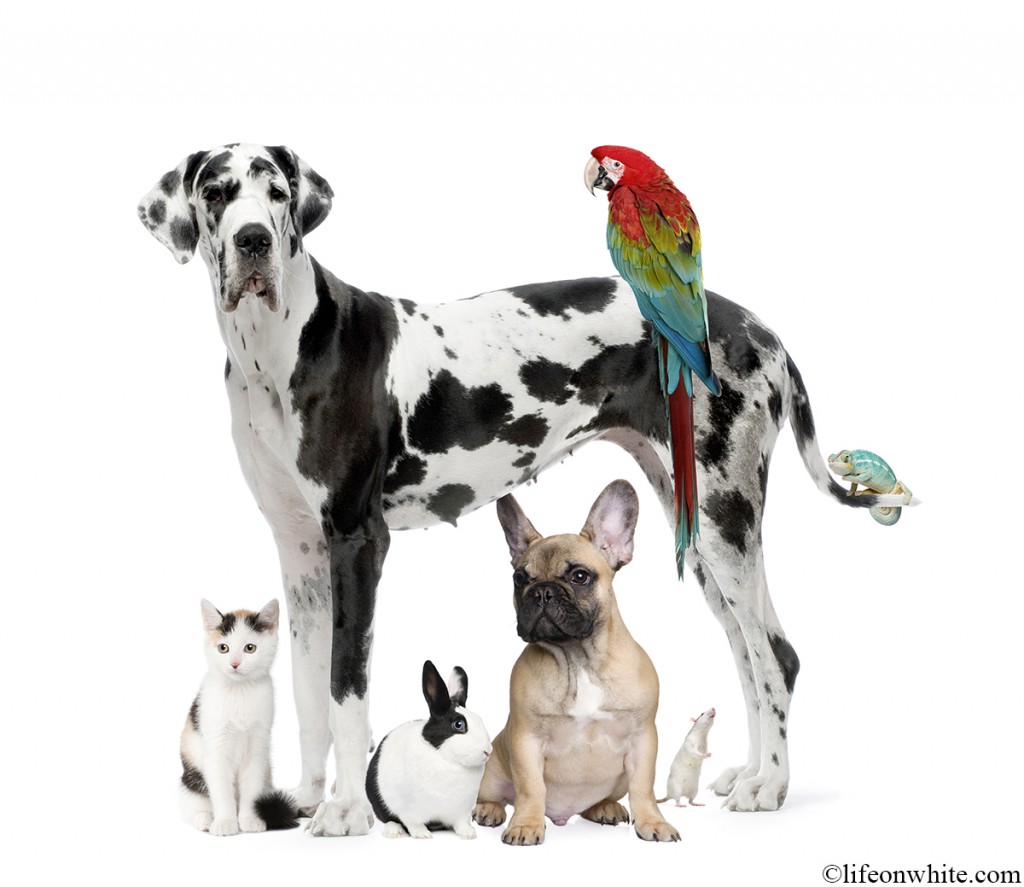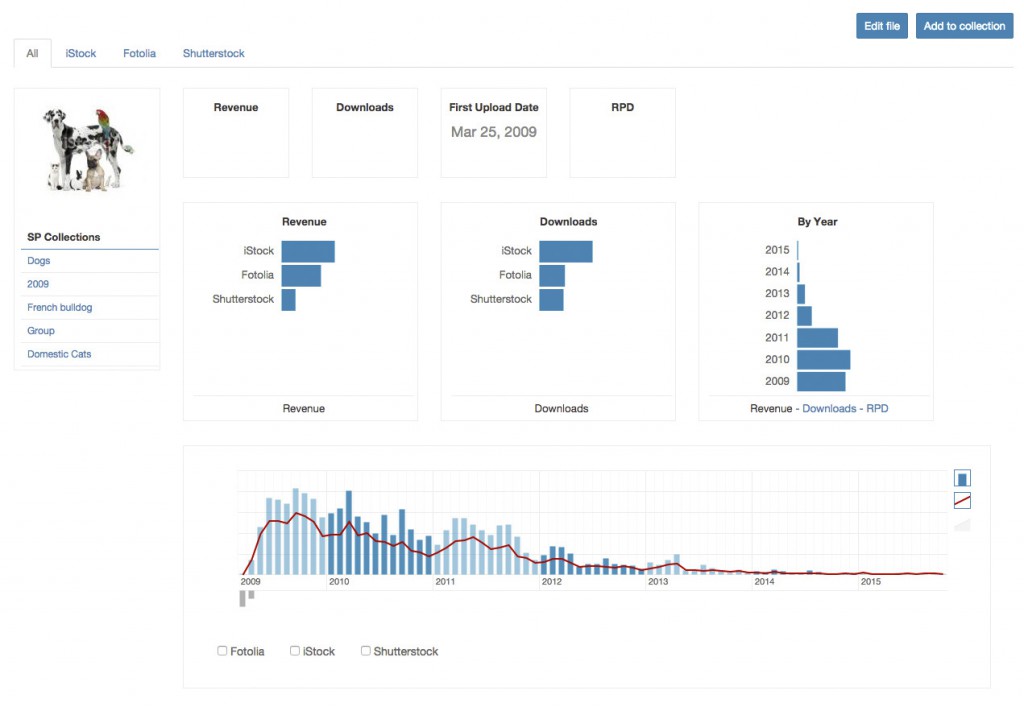Thank you for joining our Stock Performer Interview Series! Life on White probably has the most recognizable portfolio I know of. You have a constant theme (animals), and a consistent style (great lighting on white background).
 How and when did this idea kick off of photographing animals on white?
How and when did this idea kick off of photographing animals on white?
The idea came to me almost 10 years ago. At the time, I was specialized in children’s portraits, but felt the need to diversify. I decided to photograph my own pets on a white background and it all picked up from there.
Was this the beginning of your life as a photographer? Or were you doing other types of photography before?
No, I was mainly focusing on children portraits, but at the same time I had worked on landscapes and postcards, for example the Chambord Castle in France and various panoramic views of Scotland.
How did you discover the world of stock photography, and microstock in particular? Has it changed your life?
The world of micro stock was at its beginnings when I discovered it. Without realising the potential, I decided to upload a few images of various animals I had photographed on a white background. Despite only having a few photos available, they were selling several times a day, so I decided to seize the opportunity and began photographing many more domestic and even wild animals with the help of the great team of co-workers that I now have. I can definitely say that 31.000 photos later, this has changed my life.
Your website states that you are aiming to create the largest animal collection by a single photographer. How many different species have you photographed so far?
We actually have 1099 different species. But, there are still a large amount of species to photograph.
With so many species photographed, how do you know which ones you have already shot and which ones are still on your wish list?
We usually know what we have already photographed and if we are not sure, we just check on our website. However, even if we have already photographed an animal, it is always interesting to take new pictures, as each animal is different and can have other colours, patterns, attitudes, age…
Did you ever have frightening moments? Or were all animals nice and friendly to you?
We always take as much precaution as possible, knowing that even that smallest dog could potentially bite you. I would say that the most frightening moment was when I took pictures of venomous snakes. At the beginning of the photo shoot we used a glass between the snake and the camera, but as it wasn’t very practical and the snakes were moving a lot, we decided to take the glass off. Rather scary!
How do you ensure animals are calm enough for the time you portrait them? And how about insects? Many can’t stop still!
We rely on the keeper/trainer to supervise the photo shoots. They take the decision when and how to introduce the animal to the white background. Usually we ask them to bring the animal when our studio is entirely set up and when we are ready to shoot, so that there is no unnecessary waiting time. If we feel that during the photo shoot an animal is getting nervous or uncomfortable, we stop right away and try again later, if possible.
As for insects, we try to catch them in the morning when they are still “sleepy”. Otherwise it’s a question of having a lot of patience and waiting for them to stop where we want them to be.
You travel to many destinations to take your pictures. What are the challenges of producing in other countries? How do you surmount them?
The main challenges when travelling in other countries is the language. Of course when we have an interpreter it is easier, but it is not the same as if you were directly speaking to the person. During a photo session, you always need to react quickly so it can be a problem when you need to give an information to the keeper/trainer and it has to go through the interpreter. Sometimes a good picture can be lost during this.
Producing abroad probably involves quite some costs. What are the steps you take to ensure that you keep the risk of losing money as low as possible?
Most of the time, if we have the possibility to photograph an animal that we really want, we will go regardless of what the cost may be.
What does your typical production process look like? (a team? what roles does each member have and how do they coordinate? If alone, how do you organize yourself to produce fresh and good content?)
Behind each image there is a very efficient team. I take the pictures and select them. The editing team then takes over and works on the images. This means“cleaning” the animal up and ensuring that the background is totally white. I then verify the work and after we proceed with the keywording and description. The last step is to upload the pictures on the different image banks.
Thank you for sharing this image! What inspired you to take this picture?
This image is a composition. We produced it at first for our personal use but then decided to upload it.
What does this image’s revenue chart tell you?
It tells me that an image on microstock has a certain life span . We can clearly see that at the beginning the revenue grows, but then declines slowly.
Did you expect such a revenue chart? Are you happy with it?
No I didn’t expect such a revenue. As I said previously, initially this image was for our personal use and when we uploaded it we didn’t expect it have so much success.
Animals on white backgrounds are a popular subject and produced by many stock artists. What steps do you take to make sure your images are unique to the customer?
We do everything to maintain consistency in our photo editing. We aim to have the same image quality for both pets and wild animals and we keep adding new images to our collection.
The microstock market is huge and there are all types of images on offer. How do you analyse the market? How do you decide what to shoot next? Do you re-shoot popular animals often?
There is definitely more and more competition not only from companies but also from individuals. Anybody can upload a picture on an image bank. For some categories it is not interesting to upload anymore. There are so many pictures of some animals, that the sale per image has incredibly decreased.
We choose our next photo shoot according to either demand or just by opportunity, such as a new birth in a zoo. As mentioned before, we do keep refreshing our portfolio as all animals are slightly different and also techniques change over time.
Your portfolio is large enough to give you good insights into what works and what doesn’t. When you analyse your uploads and sales, what metrics are important to you?
What I mostly analyse is the RPI (return per photo) and the evolution of a group of photos. For example, if I have a group of lions on a white background, it is interesting to see if there is an evolution if I add new pictures of lions. With these comparisons we decide whether or not to produce new photos.
Would you recommend photographers to take risks and invest in employees, assistants, outsourcing, to help them in their production process?
It’s difficult to say. But what I can say is that it is easier to work with assistants as that leaves the photographer able to focus on what he or she is best at!
Many of your images are available non-exclusively on various agencies. Other images are exclusive. How do you decide which ones should be offered exclusively and which ones shouldn’t?
The only exclusive images are on Getty or on our own website. I choose depending on the quality, the quantity and the theme of an image.
Where do you think the stock business is going? How do you see the next years evolve?
I think that the image price will decrease due to the saturation of the market. This will inevitably result in lower income for professional photographers. I believe there will be a bigger focus on the photographer’s personal website.
What is your advice to other aspiring stock artists to be successful in upcoming years?
If you have an idea, stick to it and believe in it. Try to develop it as best as you can and ask for advice and do not reject criticism.
Tell us, when you are not doing photography, how do you relax and enjoy your free time?
Well, I enjoy other kind of photography and lamp sculptures. You can see my work here : www.ericisselee.com
Thank you very much for your time, it was a pleasure talking to you!
You enjoyed this interview? Then read more here: Interview Series
Sign up to Stock Performer and see how we can help you make more money. The first month is completely free!



Hubert Isselée, Eric Isselée father….A great photographer to. I will stay in my minds.
Viviane
Thank you Viviane.
We need this kind of feedback.
Have a good day !
Eric